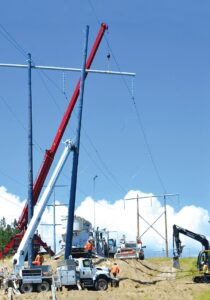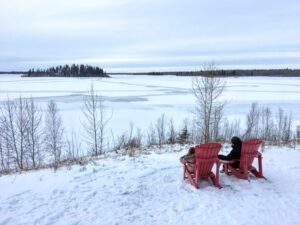
Installation Sequencing Benefits
DOWNLOAD PDF Lowest Logistics Cost Case Study SUMMARY Withlacochee River Electric Cooperative (WREC) has traditionally used single piece concrete poles to build their distribution and transmission infrastructure. PROBLEM Right-of-way (R.O.W.) costs and permitting were becoming a challenge in urban areas. Performing installations in high traffic areas with the large cranes required for concrete poles was becoming increasingly expensive and disruptive to the community. RS POLE SOLUTION The modular design of the RS pole allowed WREC to install the base modules during the day, with limited impact on the community, and return at night to vertically assemble the remaining top section of the pole: Shorter outage time. Non-peak change out cost savings. Reduced installation costs. Smaller equipment. Limited impact on the surrounding community. Longer pole life expectancy. “By installing the RS base module first then adding the pre-framed completing top modules overnight we were able to reduce our setting time which saved money and kept outages to a minimum to limit the impact on our customers. Our crews completed the installation easily and liked working with the RS poles.” Greg Musser, Senior Engineer Withlacoochee River Electric Cooperative (WREC)



